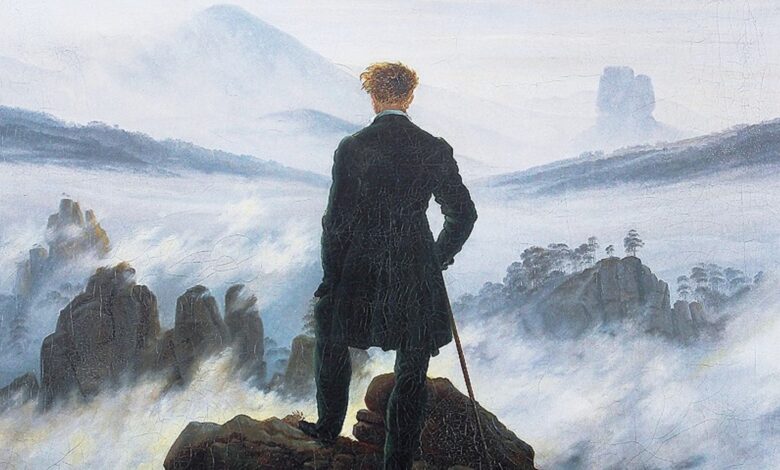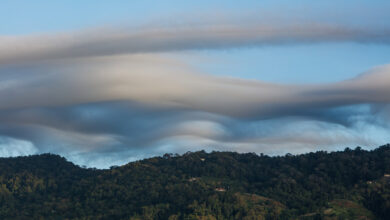At the limit of landscape photography

Are certain types of landscape photography certain to fail? If they start from a desire to describe what Immanuel Kant calls “sublime”, this may well be the case.
Landscape photographers are often attracted to certain types of places – mountain ranges, deep canyons, endless oceans – because they affect so much emotion. Of course, the aim of these photographers is not just to capture what these places look like, but to create an image that conveys the feeling of being there when the photo was taken.
Now, let me say right away that I don’t mean to suggest that there can be no good pictures of mountains or oceans flowing. Of course, there are many beautiful images of these subjects that are well-composed, well-lit, and well-edited. However, when I look at them, I can’t help but feel that there’s always something missing, some key ingredient that doesn’t show up in the final image, which people sometimes seem to imply when they Use the phrase: “you really have to be on the spot. “
A hint of what this missing ingredient might be and why it’s not something photographers can successfully embody is found in the work of German philosopher Immanuel Kant. Kant (1724-1804) is one of the most important figures in the history of Western philosophy. He produced major works on topics ranging from ethics to metaphysics, and his work remains highly influential to this day.
However, it seems surprising to reach out to Kant to learn more about photography, since he died 20 years before Joseph Niépce produced his first photograph. However, some of Kant’s thoughts on aesthetics provide us with a possible explanation of what some types of landscape photography may be missing.
According to Kant, it is important to distinguish between two different types of aesthetic reactions that we sometimes experience: the first is the feeling that something is beautiful; second, the feeling that something is sublime. Kant thinks that when we find something beautiful, we are having some sort of pleasure in it. The details of Kant’s account here are quite complex, and I’ll leave you with a lengthy discussion of them. Suffice it to say that our experience of something beautiful is ultimately a reaction to the arrangement of its parts: the sequence of notes in a piece of music, the arrangement of colors in a picture, or the curves and lines of a sculpture or face.
On the other hand, when we experience something as sublime, we are having a very different aesthetic response. The feeling of sublimation occurs when we are confronted with something so vast that, although we are rationally aware that what we are seeing is finite, to our senses me, it seems to be infinite. Kant’s favorite examples of seemingly sublime things tend to come from nature: mountain ranges and oceans are two of which are particularly relevant to our current topic. The idea here is roughly this. Suppose I am standing on the slopes of a mountain somewhere in the Himalayas. Now, rationally, I can know that the Himalayas extend for 2,400 km. But from where I was standing, they seemed to go on forever – as far as the naked eye could see, and beyond. So, my experience of the Himalayas is something that seems (though not really) endless. The feeling that I am in the presence of something infinite is, for Kant, the hallmark of sublime feeling.
 So, experiencing something sublime is very different from experiencing something beautiful. And if Kant is right about the nature of sublime as an aesthetic response, it strongly suggests that it is the kind of thing that simply cannot be transmitted through a photograph. This is simply because whenever we look at a photograph, what we are looking at – the photo itself – is very small. Most photos these days are consumed through the phone’s screen, making them small enough to fit in the palm of your hand. However, even when they are printed large, even if they fill an entire billboard, they are still very small compared to the seemingly endless landscape that gives rise to a great feeling. Indeed, Kant himself declared that a feeling of sublime cannot be found when contemplating man-made objects: these objects simply lack the necessary grandeur, the ability to defy imagination. ours to express them in their entirety.
So, experiencing something sublime is very different from experiencing something beautiful. And if Kant is right about the nature of sublime as an aesthetic response, it strongly suggests that it is the kind of thing that simply cannot be transmitted through a photograph. This is simply because whenever we look at a photograph, what we are looking at – the photo itself – is very small. Most photos these days are consumed through the phone’s screen, making them small enough to fit in the palm of your hand. However, even when they are printed large, even if they fill an entire billboard, they are still very small compared to the seemingly endless landscape that gives rise to a great feeling. Indeed, Kant himself declared that a feeling of sublime cannot be found when contemplating man-made objects: these objects simply lack the necessary grandeur, the ability to defy imagination. ours to express them in their entirety.
Seen this way, photos are simply not the kind of thing that can evoke uplifting emotions, whatever their subject may be. Sure, they can be beautiful: well-lit, wonderfully lit, and perfectly balanced. But sublime? Never.
This thought can be a bit confusing. If Kant is right (and after all, he probably wasn’t), then that suggests that part of the motivation inspires landscape photographers to come and shoot in such exotic locations. simply not possible. In that respect, landscape photography, which takes the sublime as its subject, is bound to fail long before the camera is even taken out of the bag, no matter how skilled the photographer. Of course, it is still possible to go up the mountain and take great photos. But to capture the feelings such places evoke in us and draw us back to those places (with or without a camera in hand), you really have to go there in person.




